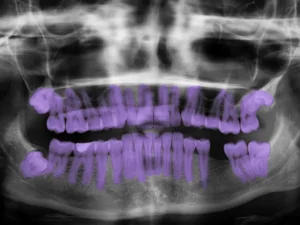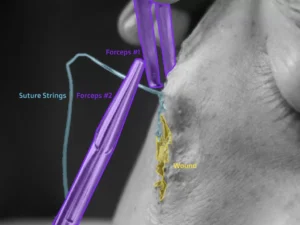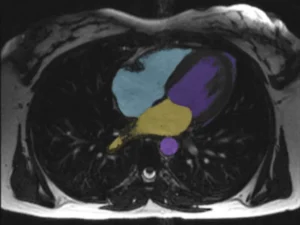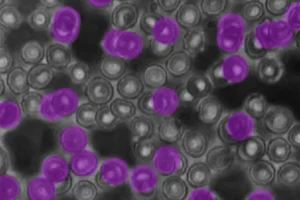Understanding Medical Data Annotation in the MedTech Industry
In today’s era of rapidly advancing technology, the intersection of medicine and technology, known as MedTech, holds immense promise for improving healthcare outcomes.
One of the crucial components fueling this progress is the process of medical data annotation.
Let’s delve into the basics of data annotation in the context of healthcare and explore its significance, techniques, challenges, and future directions.
Exploring the Basics of Data Annotation

Defining Data Annotation in Healthcare
Data annotation involves enriching raw data with metadata, labels, or tags to provide machines and algorithms with meaningful context. In the medical domain, this process plays a pivotal role in enhancing the analysis and comprehension of visual data, including medical images and videos.
Annotating Medical Visual Data
Types of Medical Data Requiring Annotation
Medical data encompasses diverse forms, with medical images and videos being predominant. Each type necessitates distinct annotation techniques to extract relevant information effectively.
Medical Images
Medical images, ranging from X-rays to MRIs, serve as vital diagnostic tools. Annotation involves identifying specific regions of interest, anomalies, or structures within these images, enabling accurate diagnosis and treatment planning.
Annotating Dynamic Medical Videos
Medical videos capture dynamic processes such as surgeries and patient movements. Annotating these videos involves labeling specific events, actions, or objects, facilitating analysis, surgical training, and outcome assessment.
Applications of Annotated Medical Visual Data

Driving Healthcare Innovation with Annotated Data
Annotated medical data fuels innovation by enabling AI-driven diagnostics, personalized medicine, and drug discovery. It empowers healthcare professionals with actionable insights, leading to improved patient outcomes and enhanced efficiency.
Realizing the Potential of AI in Medical Diagnosis and Treatment
AI models trained on annotated medical data offer unprecedented capabilities in disease detection, treatment planning, and medical research. These models complement clinicians’ expertise, augmenting decision-making and improving healthcare delivery.
Strategies for Effective Data Annotation in MedTech

1. Data Collection and Curation
Building a robust and diverse dataset is paramount for effective medical image annotation. Medical images sourced from hospitals, clinics, research institutions, and public repositories offer a rich tapestry of pathological conditions, imaging modalities, and patient demographics. Curating such datasets involves meticulous selection to ensure broad coverage, generalizability, and effectiveness for training AI models.
2. Data Cleaning and Formatting
Raw medical image datasets often harbor artifacts and inconsistencies that can compromise annotation accuracy. Pre-processing steps such as artifact removal, image resolution standardization, and formatting consistency are essential for cleaning the data. By eliminating outliers and inaccuracies, data cleaning cultivates a reliable dataset foundation for annotation.
3. Manual Annotation vs. Automated Annotation
The annotation process can be executed manually by human experts or automated using AI-based algorithms, each approach offering distinct advantages.
Manual Annotation:
Manual annotation, performed by trained medical professionals or experienced annotators, ensures high accuracy and fine-grained annotations. It excels in capturing intricate details, especially in complex cases requiring expert knowledge. However, manual annotation can be resource-intensive and time-consuming.
Automated Annotation:
Advancements in computer vision and machine learning have propelled the adoption of automated annotation methods. AI algorithms can swiftly perform image classification, object detection, and segmentation tasks, reducing manual labor. While automated annotation offers speed and cost efficiency, it may necessitate fine-tuning and validation to ensure accuracy, particularly for rare or complex cases.
Annotation Tools for Medical Image Annotation

A myriad of specialized tools and software platforms streamline the annotation process, offering user-friendly interfaces and advanced functionalities.
Popular Tools:
- ITK-SNAP: A widely used open-source tool for 3D image segmentation and visualization in medical research.
- Labelbox: A versatile platform supporting various annotation types, fostering collaboration on medical image datasets.
- 3D Slicer: A comprehensive open-source platform designed for medical image processing and visualization, offering robust tools for precise and detailed annotations, particularly tailored for medical images.
Popular Annotation Techniques for Medical Images

An array of annotation techniques empowers the extraction of meaningful insights from medical images, catering to diverse diagnostic and research needs.
Key Techniques:
- Image Classification: Assigning labels or categories to entire images, aiding in triaging and focusing on specific areas of interest.
- Object Detection: Identifying and locating specific objects or regions within images, crucial for precise diagnosis and treatment planning.
- Segmentation: Delineating and outlining specific structures or regions of interest pixel by pixel, enabling quantitative analysis and volumetric measurements.
Annotating Medical Videos
Medical videos provide dynamic insights into patient conditions and procedural workflows, necessitating meticulous annotation to unlock their full potential for medical research and clinical practice advancements.
Temporal Annotation for Medical Videos
Temporal annotation, focusing on events or objects occurring over time, is essential for accurate interpretation of medical videos.
Key Aspects:
- Frame-Level Annotation: Labeling individual video frames to identify objects, actions, or events within each frame.
- Temporal Segmentation: Dividing videos into segments and annotating them with corresponding temporal labels.
- Temporal Boundaries: Accurately identifying the start and end points of events or actions for precise temporal annotation.
Types of Annotations in Medical Videos
A variety of annotation types enrich medical videos, facilitating nuanced analysis and comprehension.
Common Types:
- Action Recognition: Annotating actions within videos, aiding in procedural understanding and surgical training.
- Event Detection: Identifying specific occurrences or transitions, such as symptom onset or tool usage.
- Motion Tracking: Tracking object or anatomical movement across video frames, valuable for analyzing dynamic processes.
Challenges and Future Directions
Overcoming Challenges in Data Annotation
Challenges such as data variability, inter-annotator agreement, and ethical considerations necessitate innovative solutions and standardized practices. Addressing these challenges is crucial for advancing medical data annotation and maximizing its impact on healthcare.
Future Trends and Innovations in MedTech Data Annotation
As technology evolves, trends like federated learning, active learning, and multi-modal annotation are poised to shape the future of medical data annotation. Embracing these innovations promises to unlock new frontiers in healthcare analytics and AI-driven solutions.
In conclusion, understanding medical data annotation is paramount for leveraging the transformative potential of technology in healthcare. By embracing best practices, harnessing advanced tools, and anticipating future trends, stakeholders in the MedTech industry can harness the power of annotated data to drive innovation, improve patient care, and shape the future of medicine.